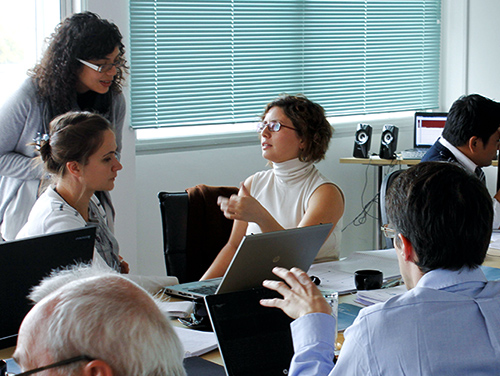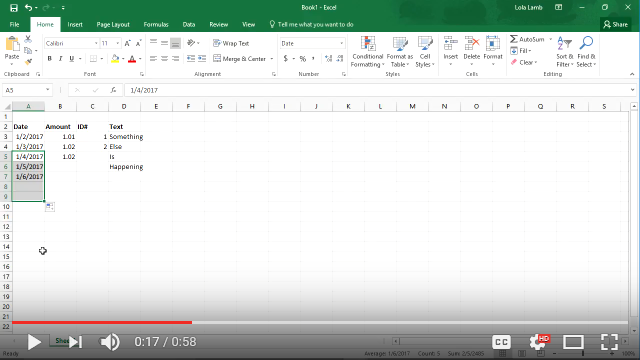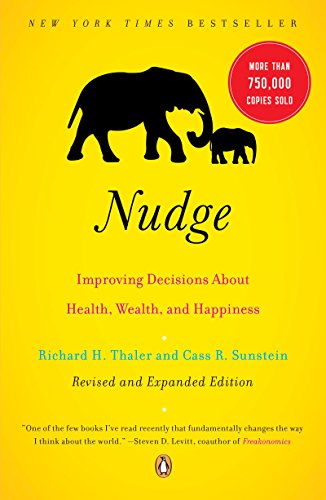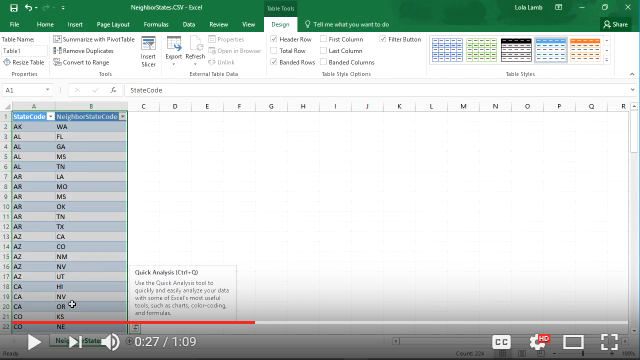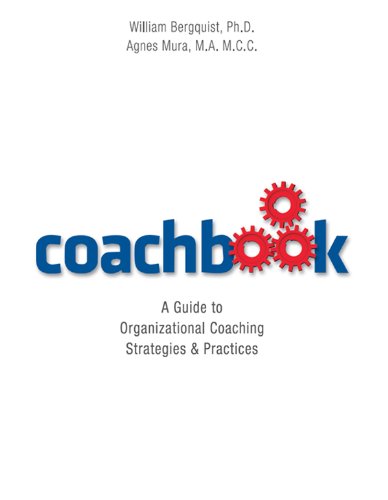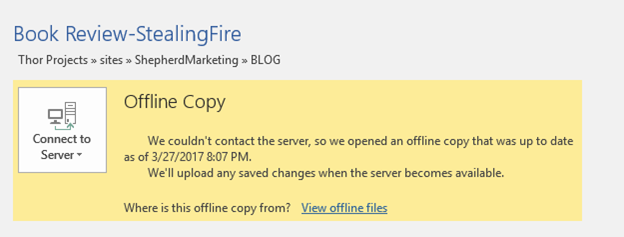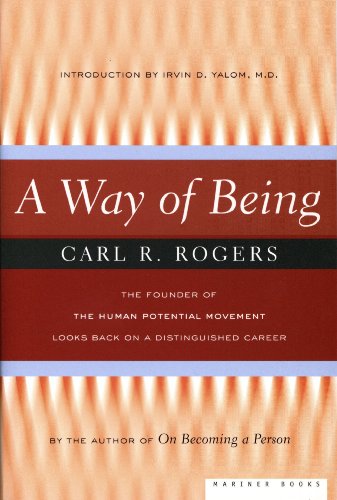Robert Bogue
April 10, 2017
No Comments
It’s an artful thing to create the right choices so that people are nudged gently into the behaviors that are best for them. That’s what Nudge: Improving Decisions about Health, Wealth, and Happiness is all about – helping people make the best choices for themselves. With the idea of libertarian paternalism, choice architects help to shape the way that people choose.
Choice Architects
Inherent in the idea that you can nudge someone is that doing so is subtle and something they barely notice. There is no such thing as a completely neutral design. Simple psychological factors, like the desire to pick the first option, means that choice architects carefully manage whose name is first on a ballot. Choice architects are the ones that are structuring the system such that the choice that is the best for people is the one they get most of the time.
Most of the time when we’re consumers, we have no idea what work has gone into the choice architecture. We don’t know that we’re subtly being engaged in ways that help us – or help the organization that we’re shopping with. However, these subtle influences are there, as we find impulse items on the end of the shelves in grocery stores and drive past stores that are having going out of business sales – continuously.
As architects of choices we rarely consider all the factors that might go into someone selecting a particular choice. Instead, we create a list of choices quickly and move on. Rarely do we think about the order that the choices occur in or what the default answer should be.
Nudge insists that there is no neutral choice design. So whatever we do, whether by intent or by design, will shift the results – at least slightly.
Libertarian Paternalism
Paternalism is thinking about the consumer as a child who cannot make good decisions. Authoritarian or dictatorial paternalism restricts the choices that consumers have, and only gives them the solution that they must “choose” because someone – a choice architect – said this is the only solution for them. Most of us would resist this attempt to enforce a choice on us. It’s what we expect out of communist dictators, and, certainly in the United States, we’re not going to stand for it.
Libertarian paternalism has the same basis but instead of preventing what the choice architect sees as sub-optimal solutions, the choices are allowed, but they’re deemphasized. The degree to which you must go out of your way to pick a different choice is a measure of how truly libertarian it is. If it’s easy to choose, it’s libertarian. If it’s hard to choose, it’s more authoritarian – disguised as a real choice.
The authors believe that libertarian paternalism is OK, or even a moral obligation where authoritarian paternalism is wrong, but admit that the line between these two extremes isn’t always the easiest to distinguish.
The goal is to balance the number of people getting the perceived optimal solution while maintaining their ability to make choices for themselves.
The Paradox of Choice
The first step is to ensure that the person has as many options available as makes sense. The challenge with this is knowing how many options make sense. In an ideal world, every option would be available to the chooser, but in a practical world, choices promote inaction, and inaction is frequently (if not always) not the best option.
The Paradox of Choice skillfully points out that we like our choices less the more options we have – and we make fewer decisions. In short, more options are the enemy to actions. If we want someone to make a choice, we need to manage the number of options.
Forced Choice
Brené Brown is careful when confronted with forced choices – “either-or dilemmas,” as she calls them. She wonders in Rising Strong who has something to gain by forcing the choice. In the case of our nudges, the hope is that the person making the choice is benefited. With an ethical choice architect, the forced choice causes the person to steer their own course. With luck, the choice architect created the situation to keep most of the people off the rocks most of the time.
The forced choice is a tool of the choice architect. They get to make someone choose between A or B, and in the process cause the person to indicate what they think is better. The problem with the forced choice, in addition to whether it really serves the person making the choice, is that too few people take action, even when faced with a straightforward choice, and what is to be done with the folks that fail to make a choice.
The Power of Default
The next tool in the choice architect’s toolbox is the power of the default option. If you do nothing, you’ll get option C. This option is often very powerful in terms of the number of people that fall into it. The option is typically one which isn’t particularly risky, because no one wants to inflict undue risk on someone just because they didn’t decide; so the choice architect creates a safer, but less rewarding, option to be the default.
We learned that the default answer is the one which is taken when neither the rider nor the elephant are paying attention to what’s happening. (See Rider-Elephant-Path in The Happiness Hypothesis for more on how powerful the defaults are.) The default is all too often the most popular answer, because people making the decisions are neither experts nor sufficiently engaged to research the correct result.
Inertia
Without insisting that the default is a specific action, most consumers fall victim to the “status quo bias.” That is, they expect that things are going relatively OK now, so why would they change? In fact, while we sometimes describe people as change adverse, it’s not that they’re change adverse at all, they just see no point in it.
John Kotter’s work in The Heart of Change and Leading Change includes a model, in which first step is to break this inertia by creating a sense of urgency. This is sometimes called a “burning platform” from which people must jump. While this is an aggressive strategy, it’s often needed to fight the strong pull of the status quo bias.
Controlled by Experts
Too often, consumers find themselves in a foreign land. The foreign land isn’t on any map that you find, but is instead demarcated by the front door of the store they walk into. Whether it’s buying a new TV or shopping for wine for a special evening, the consumer is rarely as educated as the store workers. In this scenario, it’s relatively easy for the salesperson to overwhelm you with technical jargon and features and to nudge you into purchasing what they want you to buy.
In retail, particularly electronics, it’s common for manufacturers to run contests for store employees based on their ability to sell that manufacturer’s products – sometimes even a single product. In these cases, the manufacturers are intentionally tipping the scales in their direction through nudging the sales folks.
Nudging and Shoving
The distance between a nudge and a shove are often too close to call. Nudges aren’t forced: they are, after all, libertarian paternalism. But even in the spirit of not removing options, sometimes the influence of the “expert” salesperson can drive people to a product in a way that feels more like a shove than a nudge.
The focus of the book is on nudges, though it’s clear that, by knowing what is a nudge and not a shove, there’s an inherent risk that some people will use shoves instead of nudges – because in the short term, they’re often more effective.
Mistakes in Choosing
Kahneman in Thinking, Fast and Slow and Hubbard in How to Measure Anything speak volumes about how our ability to make guesses, the right choices, and decisions can be systemically flawed. The rules of thumb that we use to make our decisions are sometimes grossly distorted in their applicability or effectiveness. I have a deck that isn’t square on the house, because the person I hired used the rule of thumb – based on the Pythagorean theorem – of a side length of 3 feet and a side length of 4 feet should have a diagonal of 5 feet. That’s easy enough when the deck is small, but when it’s a 20′ by 40′ deck, the amount of measurement error is substantial.
It’s because people make so many mistakes in choosing that it’s important that choice architects exist to disrupt the incorrect application of rules of thumb or other knowledge in domains where it’s not helpful.
Unintended Consequences
It used to be that Christmas clubs were great ways for banks to make money. People deposited money on a regular basis in an account that accrued little or no interest. They could withdraw these funds to purchase gifts for Christmas. It was an ingenious idea for the banks and, at a level, helped consumers. No one wanted to be caught short at Christmas and be unable to buy toys for their children. So the banks really won, and the consumers who weren’t capable of saving throughout the year with normal options were given a solution.
However, another choice opened. That is, the ability to charge things on credit. So now, even if you didn’t have the money to pay for the toys that you wanted to get your children, you could borrow that money on a credit card and pay a substantially higher interest rate on the money that you borrowed – making the banks more money.
This is a case where the choices got away from the choice architects but in a way that further favored the banks. No one would have necessarily predicted that credit cards would virtually eliminate Christmas clubs, but that’s what they did. (See Diffusion of Innovations for more on unintended consequences – even on well-intended interventions.)
Social Nudges
While I’ve shared about structural nudges – those relying on the architecture of the situation – they are not necessarily the most powerful. As is revealed in Influencer, there are many ways to influence a person, some of which are social. Social nudges have accomplices who sway the decisions of others. Whether the accomplices are knowing accomplices being paid, or are instead just caught up in the system themselves and decide to amplify the message to capture others through social media, they are accomplices nonetheless.
The researcher Solomon Asch demonstrated that if you asked someone a simple question, you could get 100% right answers – unless the subject heard someone else give the wrong answer. In those cases, even though the questions were easy, the subjects gave incorrect answers as much as 1/3rd of the time.
Epidemics
So powerful are social nudges that they can sometimes create a panic. In Seattle in 1954, there was an epidemic of windshield pitting – that never actually was. Someone noticed pitting on their windshield and shared this with their friends, who also noticed the pitting. They got together to wonder what was causing this damage to their cars and proceeded to drag more people and media in. That is, until it was finally concluded that pitting was a normal effect of driving a car. The pits had been with the cars all along, but someone noticed them, and concern for folks’ precious cars continued to feed more energy into the epidemic.
This isn’t an isolated incident. It happens all the time where something has been going on “forever”, gets discovered, and becomes some conspiracy plot that must be addressed.
Priming
Epidemics are facilitated through a concept called “priming”. That is, we’re more likely to follow a train of thought once it has been laid down. This is at the heart of social hacking. Social hacking is the art of gaining access to systems, equipment, or information by use of social, rather than technical, means. In simple terms, just getting someone to say yes a few times before they answer a question they should tell you no to increases the likelihood that they’ll say yes. (See my book review of Social Hacking for more.)
By creating the expectation that there is something going on or a preferred choice, we sensitize our reticular activating system (RAS) and become more aware. The RAS is important for our wake-sleep cycle, but also pays a critical role in what we look for – and what we look for, we’ll find. (See Change or Die for more on the RAS.)
Checklist for the Choice Architect
As choice architects, we should consider how to create effective nudges, and here’s a book-provided mnemonic for that:
- iNcentives
- Understand mappings
- Defaults
- Give feedback
- Expect error
- Structure complex choices
You may not get your nudges exactly right but maybe this review is just the nudge you need to read Nudges.
